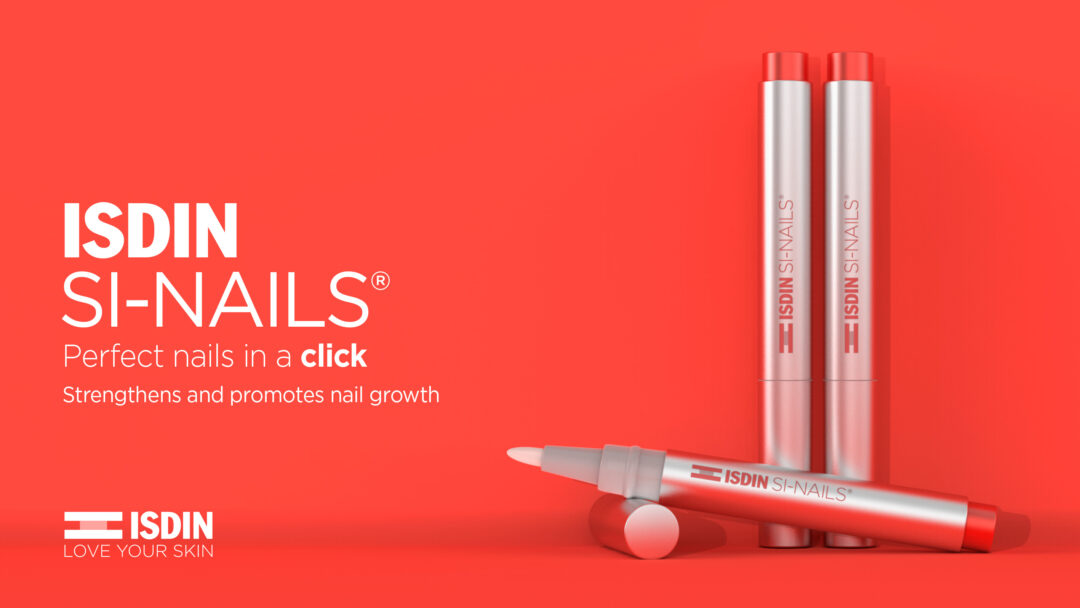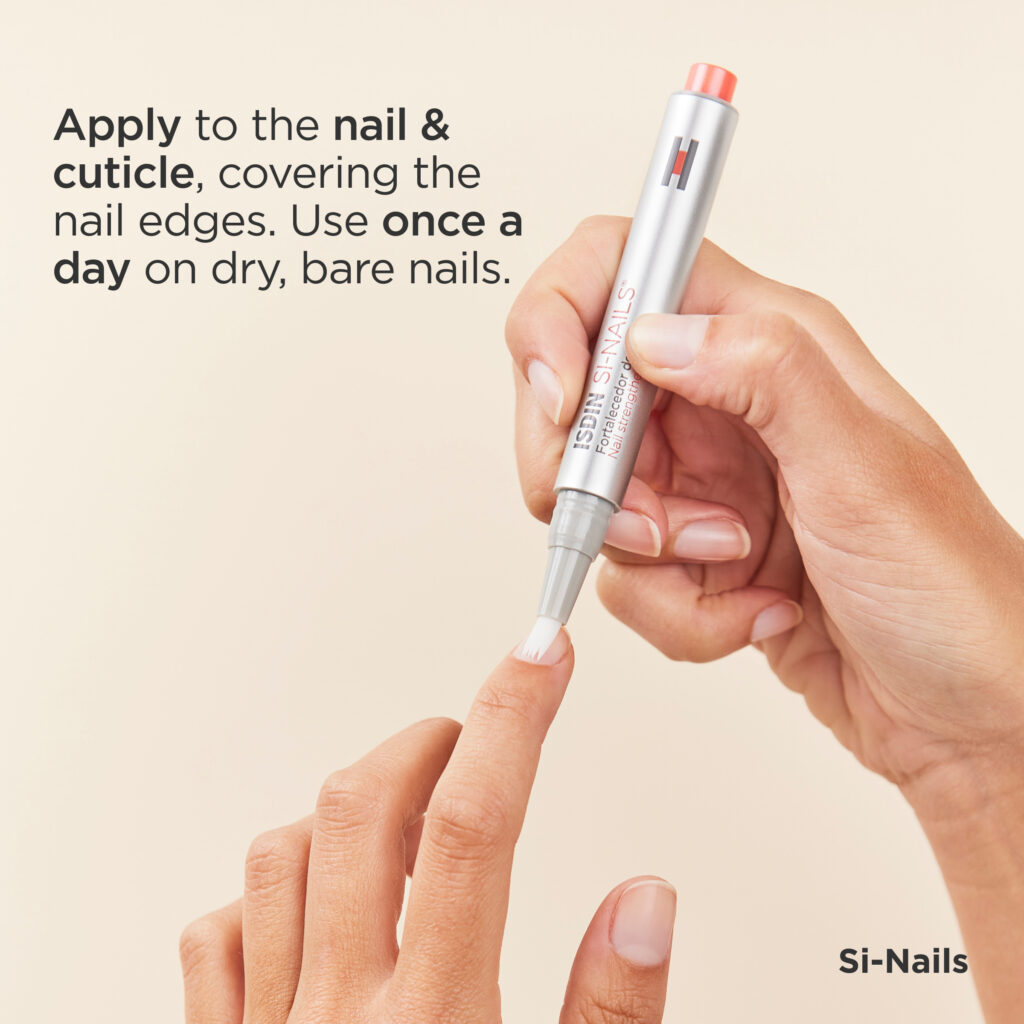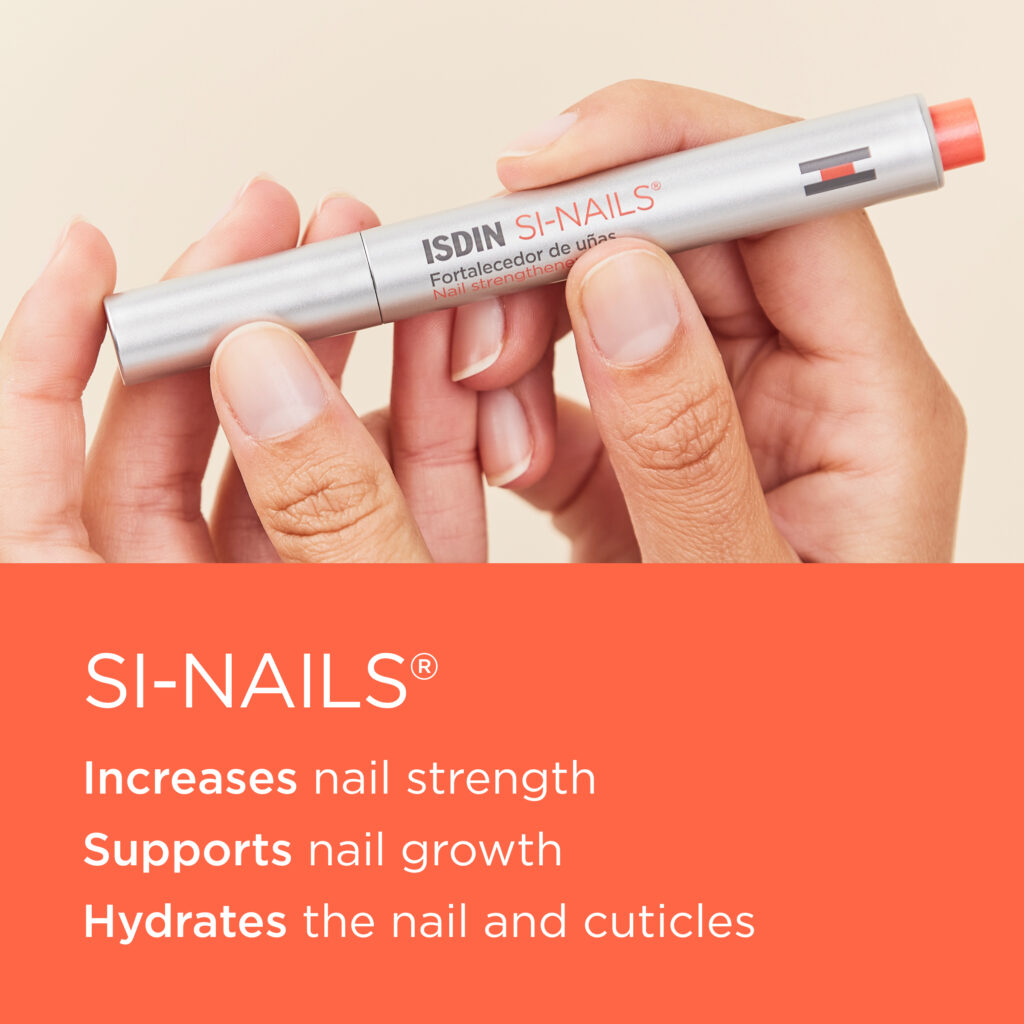
You can tell a lot about someone by looking at their nails. Hobbies, personal style, maybe even clues as to what they do for work. It begs the question, what do your nails say about you?
Here are a few ways you can spot the signs of a healthy nail versus a damaged nail to ensure you are well equipped to keep them in tip-top shape.
Know the different parts of your nails
- Nail plate: this is the visible part of the nail
- Nail matrix: the interior of the nail
- Nail bed: the soft part that lies under the nail plate
- Eponychium: a thickened layer of living tissue that surrounds the nails and protects them from external aggressors
- Hyponychium: the soft living tissue found under the top edge of the nail plate (AKA under the tip of your nails) which protects the nail bed from external aggressors
Karlo Mitchell from ISDIN South Africa explains that: “20% of our population suffers from brittle nails, more women than men. Healthy nails should be smooth, without ridges, bumps, or dents. While ridges may have no impact on your overall fingernail health, you might not want them there for aesthetic reasons. Damaged nails can also have white spots on them or lines that occur as a result of injury to the nail. However, this can all be eradicated with new nail growth and proper care.”
How to determine if your nails are healthy
- They’re pink, smooth, and groove-free
- They bend but don’t break (usually)
- Their texture stays consistent
- They’re hydrated. Regular hydration with cuticle oils, hand creams, and especially nail treatments helps nails absorb moisture to stay both strong and supple.
Important signs to look out for
- If you wear cutex frequently, you might have noticed that your nails turn yellow over time. This is because the pigment in certain polishes can discolour your nails if you paint them often. This doesn’t necessarily mean your nails aren’t healthy – it just means you might need a break from the polish every once in a while! That said, yellow nails can sometimes indicate an underlying health issue. In healthy nails, new growth should not be yellow in colour. So, if your nails stay yellow as they grow, visit your dermatologist to see if there’s an underlying cause.
- If you’ve noticed that your nails are showing signs of weakness, discolouration, or split and break frequently, first off, give them a break from polish. Then, apply a treatment that both strengthens and hydrates for optimal fingernail health.
- Ingredients to look out for when shopping for nail strengtheners and cuticle oils are:
- Pistacia lentiscus. Keratins are an important building block for strong and resistant nails. Pistacia lentiscus gum helps support keratins, strengthening their bonds and improving nail architecture.
- Silanediol salicylate. Silicon is one of the predominant minerals in the nail. This ingredient promotes silicon, a crucial step in growing healthy nails.
- Cationic hyaluronic acid. An enhanced version of one of the most well-known moisturisers in the world, which promotes cuticle and nail moisturisation. Being cationic, it adheres to the skin up to 17 times better than regular hyaluronic acid.
ISDIN Si-Nails for healthier, stronger nails
The proof is in the numbers. In a study of consumers who used Si-Nails, after 28 days:*
- 100% of users reported smoother nail surfaces
- 97% of users reported that their nails were harder and grew faster
- 93% of users reported that their nails were less brittle and looked more attractive
“If you’re looking for healthier-looking, stronger nails that grow faster, try Si-Nails nail strengthener and begin to see the difference in 14 days. Don’t forget to include your nails in your daily skincare routine, and you’ll be well on your way to perfect, healthy nails,” concluded Mitchell.


